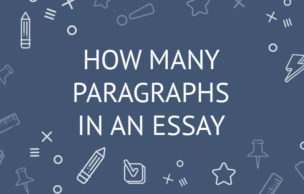Persuasive Speech Outline Template

What makes people follow others? A valuable idea is important enough, but it matters much more how this idea is conveyed. An unsuccessful speaker may fail to convince people of fundamental truths. An outstanding speaker, on the other hand, may persuade you to believe that two and two make five. Being able to give compelling and persuasive speeches seems like a natural gift. But is it so in truth?
Partly, yes. Some people can boast the inborn ability to persuade others. Often, they just speak from their hearts, and people listen. However, it doesn't mean that without proper knowledge and practice they can lead an army of followers or push their ideas in front of the board of directors. A persuasive speech is not only about passion; one should learn how to do it right. The initial stage of creating a compelling and persuasive speech is to state the main idea and to convey it gradually.
If you've ever tried to get more information on how to write this or that paper, chances are you did come across the celebrated website of the Purdue University. According to Alan H. Monroe, a professor at this university, it is reasonable to employ the basics of psychology to create a top-notch persuasive speech.
Basing on the Motivated Sequence Outline Template conducted by professor Monroe, we are going to introduce you the principles of making your persuasive speech sparkling and truly convincing.
The Persuasive Speech Outline in Detail
There is a high number of cases when you can use the outline formulated by Alan H. Monroe. The speech includes several of stages:
Stage #1 Spark the Interest
It is critical not to overwhelm your audience by making them guess what your point is. You are to make them sure that your speech is worth their attention from the very beginning.
The introduction of your speech should be breathtaking to grab listeners’ attention at once. It is to include a powerful opening passage and a précis of what you are going to talk about.
There are many different options to begin a successful persuasive speech. You may include some arguable or surprising statements or make a joke if your topic allows such liberties. Your ultimate goal at this stage is to make your audience intrigued and interested.
For instance, you can surprise your listeners by stating:
- Blueberries help you to get smarter.
Or tell a story about your life:
- Do you know that a simple cup of coffee can change a person’s life? I never believed it until I came to a cafe a couple of months before. I saw a little kitten under my table and decided that this one deserves to live with people who would take care of it. I wanted to search for someone who would shelter this little creature. But after a couple of hours, I spend with the kitten I understood that it is capable of finding a master on its own. Surprisingly, it turned out to be me.
You can also ask your audience:
- Have you ever taken a course on emergency risk management?
The previous examples should lead to your point, but don't have to concern your topic. You can choose the other way and stick to your topic from the very beginning. If you are going to talk about the impact of sugar on a human body, you may start your speech as follows:
- One may think that he or she can exclude sugar from their ratio by stopping consuming sweets. If you think so too, you are bitterly mistaken, as sugar can be found in the products nobody considers to be sweet, like sauces, dairy, and even bread.
At this stage, you are to demonstrate that your words are worth more than your audience’s attention - they are worth to be trusted. The opening passage has to touch your listeners’ feelings. This is the first step to make your speech sound reliable.
Stage #2 Reveal the Problem
After you've got smoothly to the point, you should reveal it in a very specific way. A persuasive speech could be considered as a call for an action. And the action is to be caused or predetermined by a particular issue to be resolved. It means that you are to persuade your listeners that there is something that needs their reaction.
It can be done in a variety of ways:
- State what exactly needs to be reacted on.
- Illustrate the issue with vivid examples. The main aim is to create the image of the issue under consideration.
- Use the particular data to illustrate the problem. It can be anything specific, like statistics or testimonies.
- Give a detailed explanation of what could happen, if your audience ignores the problem and why it concerns them.
For example:
Consuming sugar is tremendously dangerous for our health. However, excluding it from the diet is next to impossible. Only a couple of decades ago, the maximum amount of sugar that is to be consumed by different groups of people were disclosed. Lobbying the sugar industry still influences the sources of information about it, that is why the institutions are somewhat vague about it. That is why monitoring your ratio is up to you, which makes you entirely responsible for your health. For the sake of creating a successful speech, at this stage try to avoid any hints of how the problem could be solved. The audience should get even more intrigued than before, so don't lay your cards on the table until the last stage. This what makes you a leader or a problem-solver in the eyes of the audience.
Stage #3 Solve the Problem
At the key stage of your speech, you are to give a solution. It should be clear how the audience can apply it. You don't have to create images anymore. Tell people what to do precisely. You need to make them sure that this is going to make a difference.
- It is only now you start giving unquestionably direct instructions.
- Go into detail about how they can solve the problem.
- Show what the effect of their actions is.
- Demonstrate that the solution you offer will have a clear effect.
- Be ready to prove your point. Create the feeling that you are a hundred percent sure you are right. Try to foresee any counter-argument that can compromise your point.
For example:
It only takes you three weeks to form a habit. And healthy nutrition is a habit you need to implement.
Stage #4 Give the Perspective
Now, you are to demonstrate the difference that is to be made by your solution. Depict what your listeners’ lives would be like if they follow your instructions. On the other hand, you may choose to tell them what would happen if they don't. That is how we get a positive and a negative perspective.
- Show the positive effect of their actions. Try to convince the audience that the future would be much brighter if they listen to you.
- Show what the negative consequences of the lack of action are. Don't leave any room for doubt - tell that without doing what you said, the consequences will be horrible.
- Prove your point by demonstrating the contrast between the future of those who listen to you and those who don't. Focus on the need for the immediate action. Depict what will happen if the listeners don't take it, and then what will happen if they do.
For instance, focusing on the positive effects of your solution, you may:
Tell your audience how they would feel if they reduce sugar in their ratio and that they will benefit from it in different spheres of life (will be more concentrated to work, slimmer, healthier to take care of their families, etc.)
If you want to show the negative consequences or set the contrast, provide the vivid example of diseases caused by sugar, ask if this is the future they want.
Stage #5 Appeal for an Action
Finally, you are to make a “yesterday you said tomorrow” performance. Tell the audience that there is no time to hesitate anymore and it is now when they must act:
Don't let the corporations ruin your health and life! Take responsibility for yourself and your future. Take a 21-day no-sugar-challenge. Feel free to ask any questions, and we will provide you with all the information you need.
The Final Word
One of the essential elements of a successful persuasive speech doesn't depend on the outline you choose to follow. You have to repeat your message numerous times. If you are not sure someone would listen to the same arguments, again and again, mind there are known ways to do it well. Repeating implies paraphrasing of the same ideas. Thus, instead of saying the same one more time, use different words for the same information. This is the best way not to let your listeners lose track of what you are trying to convey without making them bored or suspicious.





